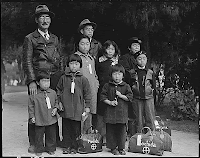Lost in Transition: Using good screen grammar in the edit bay.
Video stories are comprised of scenes, sequences, and shots or clips. A
scene is a part of the story that takes place in one location. Scenes
are created from sequences and shots. A shot is a single piece of video
created when the camera begins recording until the end of the recording.
Shots are usually edited (trimmed) into clips and combined into a
series of clips called a sequence. A sequence shows the same action from
different perspectives to move the story forward. A transition is used
to join clips. You have probably viewed many video transitions on
television and in movie theaters.
I've written in this blog in the past about making smart choices when editing your project and how like good punctuation an editing transition can hanlp tell you story in the clearest visual language. The most basic transition is called a cut. A cut is a simple switch from one clip to another. In most cases a cut is the best choice to keep your story moving. When using cuts in the video editing process you should question the reason for your choices. Cutting may:
Watch what happens when you take a classic movie action scene and use the worst possible transitions to keep the story moving. I call it 'Cutting like an 8th grader'.
I've written in this blog in the past about making smart choices when editing your project and how like good punctuation an editing transition can hanlp tell you story in the clearest visual language. The most basic transition is called a cut. A cut is a simple switch from one clip to another. In most cases a cut is the best choice to keep your story moving. When using cuts in the video editing process you should question the reason for your choices. Cutting may:
- Change the scene
- Compress or expand time
- Vary the point of view
- Build up an image or idea
Watch what happens when you take a classic movie action scene and use the worst possible transitions to keep the story moving. I call it 'Cutting like an 8th grader'.
'Nuff said? : )



Comments